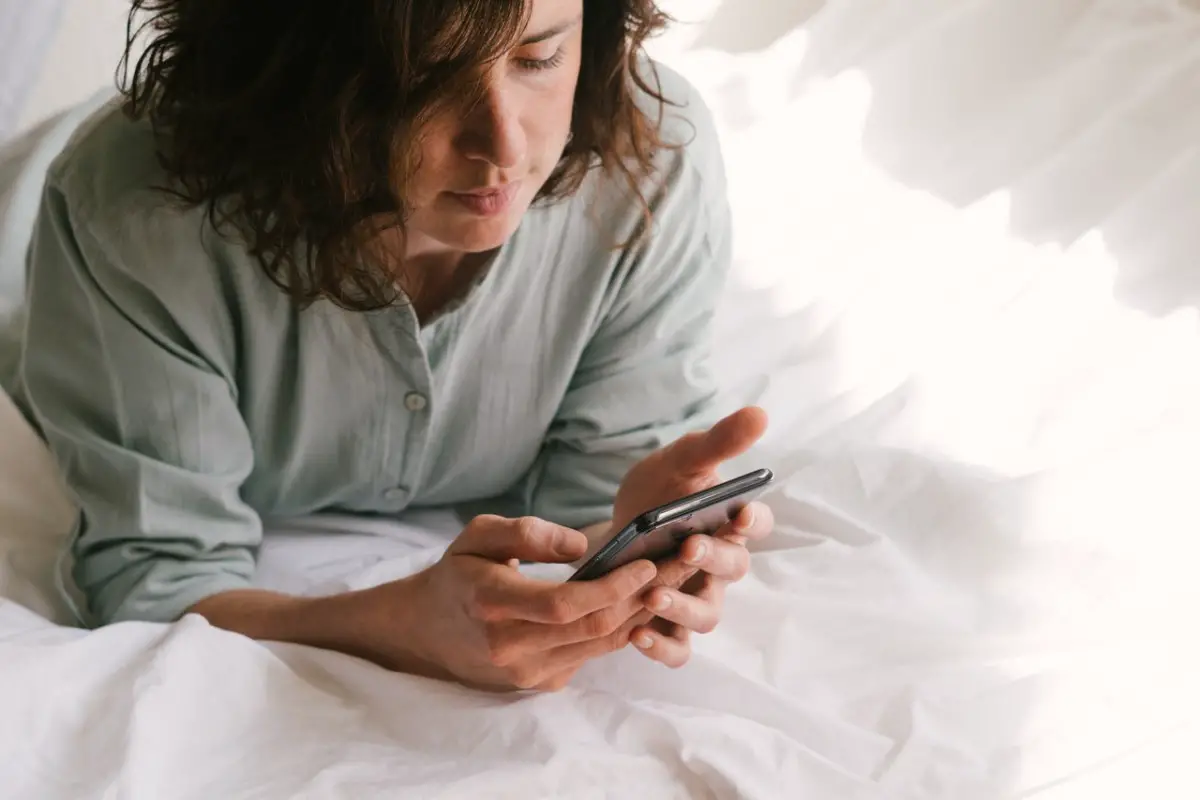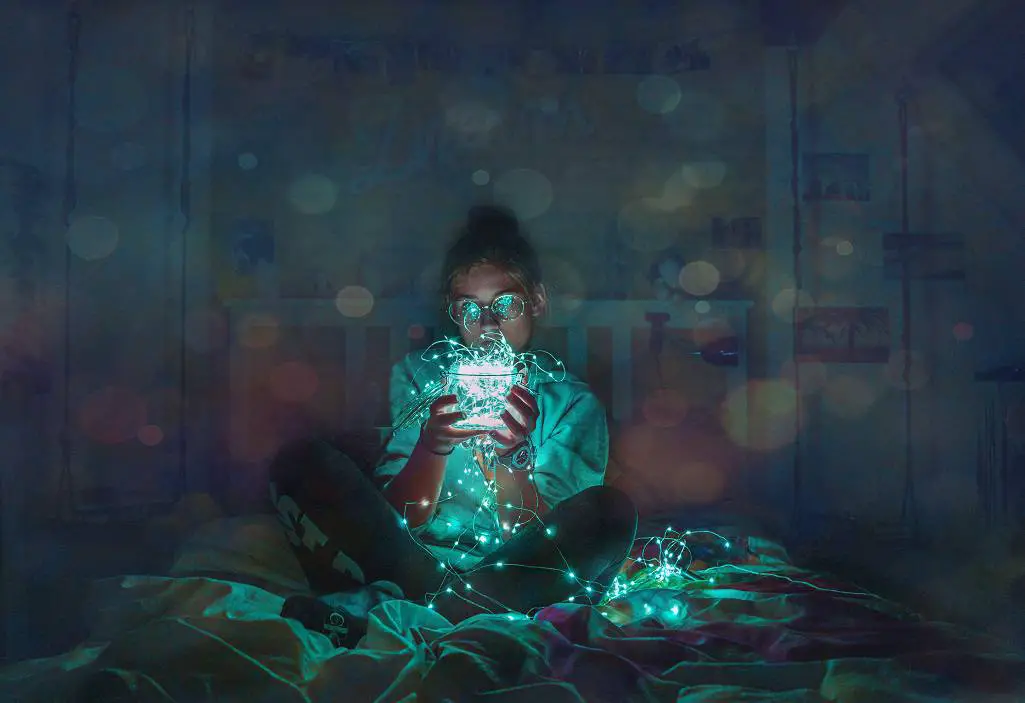Table of Contents
**This page contains affiliate links and I will be compensated if you make a purchase after clicking on my links**
Photo by Max Felner on Unsplash
A case study in risk trade-offs
When I googled the title above, the number one article that came up was titled “Cancer WARNING: Do NOT sleep with this next to your head or in your bed”.
As a trained scientist, I’m the biggest skeptic. My mantra is “show me the data.”
So, I started digging.
Spoiler alert:
At present, there is no data to suggest a connection between the electromagnetic radiation from your phone and any health issues. However, studies are ongoing.
That scary article cites the California Department of Public Health (CDPH), a reputable government organization.
However, according to the CPHD, “there are concerns among health professionals…”, however, “… the scientific community has not reached a consensus on the risks of cell phone use.”
“Concerns” do not equal evidence.
Concerns are why we do the studies in the first place. But we need to wait for the results before making any sweeping declarations.
Cell phones emit electromagnetic radiation in order to talk to cell towers. Which is something they do regularly, even when you aren’t using your phone.
Keep in mind that we are surrounded by electromagnetic radiation of different frequencies, including radio waves, our cordless devices, and WiFi.
According to the World Health Organization (WHO), low levels of electromagnetic radiation—such as those we are exposed to in our homes—are not harmful.
Yes, there are “biological effects”, but as the WHO reminds us, that doesn’t necessarily mean something is harmful.
Because high levels of electromagnetic radiation can be harmful, many experts question whether long-term exposure or proximity to low levels—such as holding a cell phone next to your head—might have deleterious effects.
Healthcare professionals and parents alike are most concerned with children and teenagers, who’s brains are developing.
The Interphone study
Back in 2010, the International Agency for Research on Cancer (IARC), which is part of the WHO, published a large study, measuring a possible relationship between cell phone use and the development of brain tumors.
The study started in 2000 and followed participants that had been using cell phones for at least ten years.
No increased risk in either glioma or meningioma (types of brain tumors) was observed
There was a bit of an increase in glioma at the highest exposure level, but those results were questionable.
There are a couple of caveats. Today, our cell phones are designed differently than those available back in the 2000s.
And our cell phone use patterns are different. We use our phones for significantly more hours per day, but we rarely hold them up to our ears to talk. Instead, we text or peruse the screen.
Cell phone use is a relatively recent phenomenon. Cancer may take decades to develop. Perhaps it’s too early to observe these types of negative effects.
IARC has currently classified radiofrequency electromagnetic fields as “possibly carcinogenic to humans (Group 2B)”. This is the classification used if the risk is “considered credible, but when chance, bias or confounding cannot be ruled out with reasonable confidence.”
To put Group 2B in perspective, the following are also considered Group 2B: coffee and talcum powder.
Just because a connection hasn’t yet been found doesn’t mean there isn’t one. It may simply mean it hasn’t been found.
It may take several more decades of research until we’re confident one way or the other.

What the experts say
All the other big government agencies say similar things.
According to the Centers for Disease Control and Prevention (CDC): “At this time we do not have the science to link health problems to cell phone use.”
According to the Food and Drug Administration (FDA): “According to current data, the FDA believes that the weight of scientific evidence does not show an association between exposure to radiofrequency from cell phones and adverse health outcomes.”
According to the Federal Communications Commission (FCC): “…no scientific evidence currently establishes a definite link between wireless device use and cancer or other illnesses…”
All groups echo that more research is needed.
If you have concerns, here are some guidelines to follow.
- Have children and teens turn off their phones at night. (Or put them in airplane mode.)
- Use a hands-free headset or the speakerphone
- Text instead of talking. (But not while driving…)
- Avoid products that claim to block radio frequency energy. (According to the CDPH, they may increase your exposure.)
Negative effects of your phone on sleep
Your phone probably won’t give you cancer, but it does negatively affect your sleep. With poor quality sleep, we are more susceptible to a very long list of health issues, including cardiovascular disease, diabetes, obesity, and depression.
And yes, cancer.
Several studies of women who worked the night shift found up to a 40% increase in the risk of breast cancer.
The IARC considers shift work a Group 2A carcinogen, “probably carcinogenic to humans”.
Which will kill you first? The electromagnetic radiation or poor sleep?
The problem with too much information
In order to fall asleep, it’s important to quiet your mind and relax.
You should not be stressing about your life or the world at large.
Do not watch the late-night news. Or late-night talk shows.
And good God, no Twitter!
The problem with too many alerts
We’ve been trained, like Pavlovian dogs, to respond to every tiny beep our phone makes.
Turn those alerts off at night.
Don’t fall victim to sleep texting (a form of parasomnia like sleepwalking or sleep eating.)
If your sleep is susceptible to flashes of light, make sure your screen is facing down.

Photo by Jacob Van Blarcom on Unsplash
The problem with blue light
The biggest reason to avoid your phone (or any screen) prior to falling asleep is the blue light those screens emit.
All plants and animals, we included, follow circadian rhythms or twenty-four-hour cycles with defined periods of wakefulness and sleepiness.
Sometimes our rhythms are off. All of us have experienced “jetlag”, either from flying to a new time zone or starting the swing shift at work.
Or simply setting our clocks forward one hour in the spring.
Light helps reset our rhythms to “wakefulness”. And blue light happens to have the most potent effect.
Along with the rods and cones responsible for our vision, our eyes also have special cells called intrinsic photosensitive retinal ganglion cells (ipRGCs). With light exposure, these cells send signals to the part of the brain responsible for maintaining our circadian cycle.
ipRGCs work best with light at 479 nm. “Blue” is defined as 450 – 490 nm in wavelength. (Below 450 nm is violet, and above 490 nm is cyan.)
Feeling nappy? Instead of grabbing a coffee, take a brisk walk outside in bright sunlight.
Blue light does this by directly suppressing our production of melatonin.
Along with a few other hormones, our levels of melatonin define where we are supposed to be in our circadian rhythm: low during the day when we’re supposed to be awake and elevated at night when we’re supposed to sleep.
Disrupting melatonin production with blue light has been shown to disrupt sleep.

Available from “The inner clock—Blue light sets the human rhythm” by Wahl S., et. al., J of Biophotonics, 2019.
On the flip side, blue light has been shown to improve memory and attention.
Solutions to the blue light problem
- Stay away from all screens for at least four hours before bedtime. Instead, listen to podcasts or music.
- Reading before bed is beneficial. Just use old-fashioned analog paper books. No kindles.
- If you must use your iPhone or iPad, turn on Night Shift, which is intended to reduce the blue emitted from your screen. For Android users, look for Apps that adjust the blue for night use.
In a 2015 study by Chang, et al., subjects read their favorite book for four hours prior to sleep. Either they read a traditional paper version (under the room’s fluorescent lighting) or they used a “light-emitting eReader”, which was an iPad, pre-Night Shift.
When they used an iPad, they “took longer to fall asleep, had reduced evening sleepiness, reduced melatonin secretion, later timing of their circadian clock, and reduced next-morning alertness”.
Interestingly, when the iPad was analyzed for the different wavelengths of light emitted, there was a huge peak at ~450 nm, right in the blue area.
Will Night Shift, solve this problem?
A more recent 2018 study by Nagare, et al. measured melatonin suppression with Night Shift and found that it still occurred. Compared to the orange goggle control (see blue-blocking glasses below), there was still around a twenty to thirty percent suppression of melatonin with Night Shift.
However, it is not yet known what effect Night Shift has on actual sleep.
The authors of both studies recommend the following:
- Turn down the brightness on your screen
Other solutions
- Use lightbulbs in your bedroom (and bathroom) that are “amber” in tone. Traditional “white” lightbulbs contain all the wavelengths of light, including blue.
- Blue-blocking glasses are available from your favorite online store. Make sure the glasses are marketed to enhance sleep (they are usually amber in color) and block the full range of blue light. Other products may only block the lower blue light frequencies and will have no benefit on sleep.
If you have chronic sleep issues, please seek guidance from a medical professional. Some sleep issues, such as sleep apnea, can be very serious and if left untreated may lead to heart failure.

Photo by camilo jimenez on Unsplash
The case for sleeping near your phone
Life itself is a risky endeavor. There are always trade-offs. Reduce your risks by doing one thing may increase your risks elsewhere.
Yes, ban your children and teens from using their cellphone at night. But what about the designated adults in the household?
In case of emergencies, you should always have a charged phone nearby.
Family members could be injured or in need of a ride home from an unsafe situation.
Case in point. I live in California, which has experienced some of the most devastating fires in the last few years.
In the fall, hot Santa Ana winds blow in from the desert and the humidity drops to zero. Because there’s been no rain since spring, chaparral growing in our “green” spaces dries to kindling. One downed powerline and thousands of acres are ablaze and hundreds of thousands of people are ordered to evacuate.
You’ll receive your evacuation order via text and phone message.
(Don’t worry, if you’ve turned off your phone alerts, you’ll still get the message.)
Which is most likely to kill me? Cancer from my phone’s electromagnetic radiation, health issues due to poor sleep quality, or my house burning down?
I sleep with my phone.
Want to learn more about the products mentioned?
[If you experience issues with menus or links not working, it is most likely due to your Ad blocker.]



